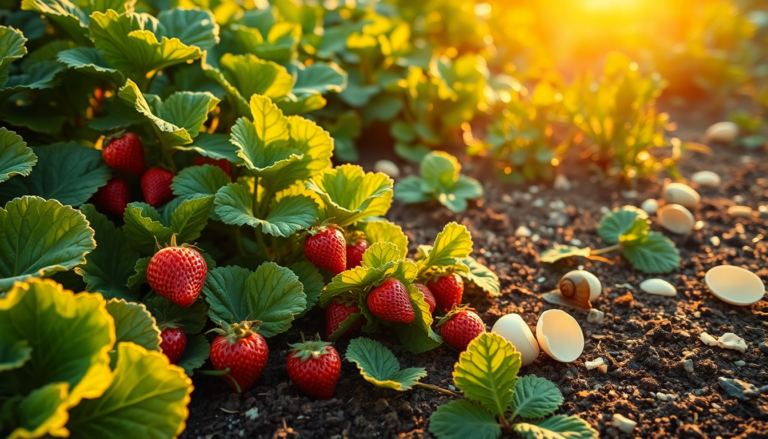Argomenti trattati
Slugs might not be the fastest creatures in your garden, but their *insatiable hunger* can turn your vibrant plants into a feast. These slimy pests are notorious for demolishing tender greens like lettuce and strawberries, often leaving a path of destruction in just one night. But fear not! There are simple and effective ways to keep these garden invaders at bay without resorting to harsh chemicals or fancy gadgets.
Understanding Slug Behavior
Slugs are night owls, spending their days tucked away in cool, damp spots and coming out after dark to munch on your beloved plants. So, how can you fend them off? It all starts with good garden hygiene. Clearing away potential hideouts, like boards, stones, and thick layers of mulch, is essential. As integrated pest management expert Cheryl A. Wilen from the University of California points out, cutting down on available shelter is crucial for long-term slug control. By reducing low-growing plants and debris, you can significantly lower the slug population in your garden.
Utilizing Traps and Barriers
One classic method for slug control is the *beer trap*. This involves burying a shallow container level with the soil and filling it with your favorite brew. The enticing smell draws slugs in, leading them to an unexpected end. But a word of caution from Wilen: these traps can sometimes attract more slugs than they catch, complicating your efforts. To boost your success rate, think about pairing beer traps with other slug deterrents.
Physical barriers can also be a game changer in your slug defense. Materials like crushed eggshells, diatomaceous earth, and gritty sand can create a rough path that slugs hesitate to cross. However, copper is particularly noteworthy. Wilen mentions that copper barriers can give slugs a mild electric shock, effectively sending them packing. Wrapping copper tape around raised beds, pots, or even individual plants can create a robust defense.
Handpicking and Environmental Adjustments
If you’re up for a hands-on approach, *handpicking* slugs can be one of the most effective methods, especially in smaller gardens. They’re easiest to spot during damp evenings or early mornings when they’re on the prowl. With a flashlight and a container of soapy water in hand, you can capture and dispose of them like a pro. Wilen emphasizes that consistency is key—regular handpicking yields the best results.
While mulch helps retain moisture and suppress weeds, it can also provide a cozy home for slugs. In areas known for slug activity, consider switching to coarser mulch like bark or gravel instead of heavier organic materials like straw, especially in the wet season. Wilen suggests steering clear of sawdust or dense organic mulches during rainy spells, as they create ideal slug hideouts.
Encouraging Natural Predators
Another clever tactic for keeping slugs in check is to invite their *natural predators* into your garden. Frogs, toads, ground beetles, and birds all love a good slug snack. To attract these helpful creatures, avoid using broad-spectrum pesticides that could harm them. Think about adding a small water source or planting native shrubs to create a welcoming habitat.
Interestingly, some plants are less appealing to slugs, such as herbs like rosemary, lavender, and sage, along with ferns and ornamental grasses. By mixing these slug-resistant plants with your more vulnerable crops, you can create a natural barrier that helps protect your garden from these pesky munchers. Why not give it a try?

